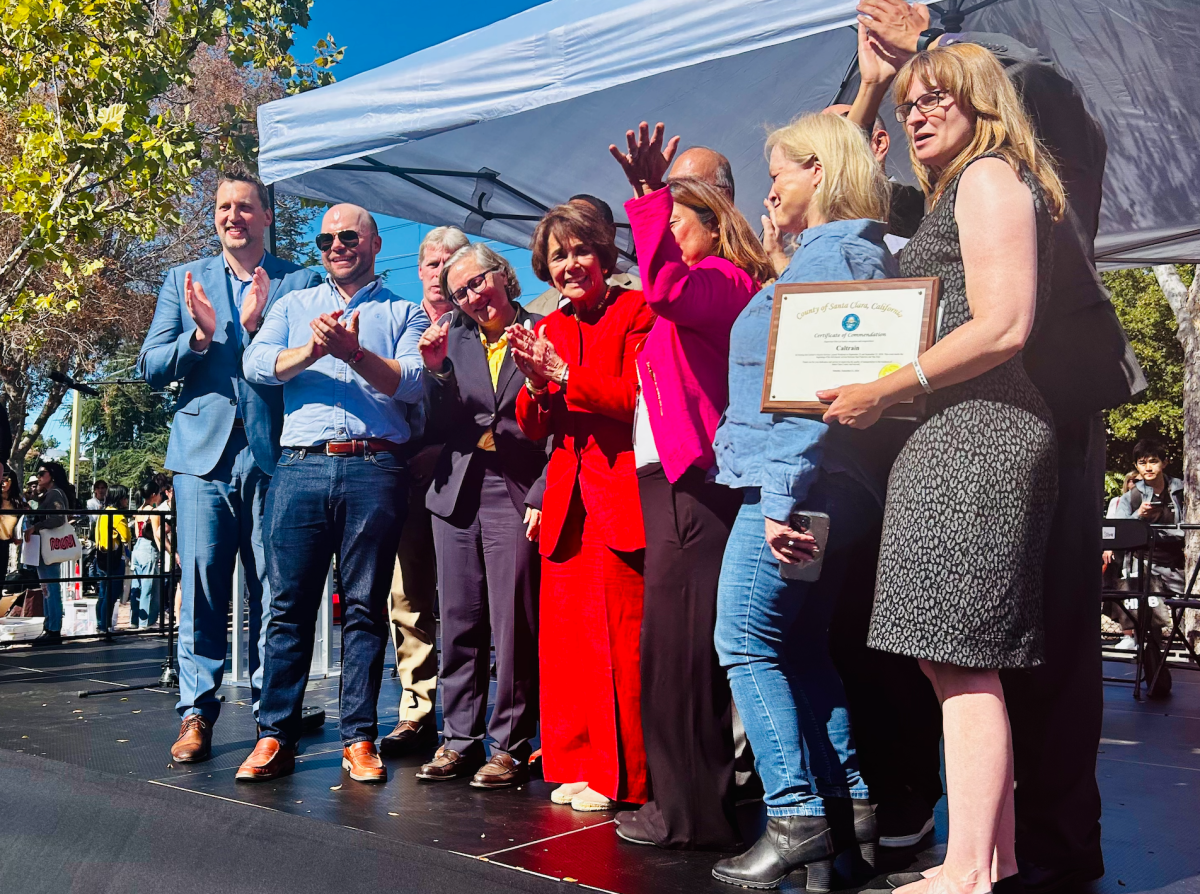We are the ambassadors of the future. We did something for the next generation that we can be proud of. That really is the mark of America — progress.
These are words spoken by United States Representative Anna Eshoo to celebrate the transition to electric trains at Caltrain’s official launch party this weekend at the Palo Alto Caltrain Station.
The Caltrain will be officially and fully electric starting Monday spanning from San Francisco to San Jose.
The parking lot behind the Palo Alto Caltrain Station was filled with tents and people from all around the bay area gathering for the event. The CEO of Caltrain, Palo Alto Mayor Greer Stone, Eshoo, a Democratic lawmaker who this year will retire after representing the 16th Congressional District since 1988, and others all gave speeches commending the accomplishment.
In her speech, Eshoo said that without the support of communities like Palo Alto, the federal government would not have agreed to her plans for Caltrain’s electric future.
“To the Palo Alto community and the communities that I have the honor to represent, you all strengthened my hand in making the case at the federal government,” Eshoo said. “The first thing I told all the ‘big shots’ was that my constituents chose to tax themselves, to raise their sales tax, so that there was an investment in Caltrain.”
Palo Alto resident Ned Miller commuted on the Caltrain to work every day before he retired and said that the electric trains are a huge improvement.
“They are smoother, more comfortable, cleaner, more spacious and have better information displays.” Miller said.
In addition to providing a smoother and faster ride, the trains also offer free Wi-Fi.
A Swiss electric train company, Stadler, partnered with Caltrain in 2016 and is responsible for the technology powering the electric trains. According to Stadler CEO Martin Ritter, expanding the electrification of Caltrain south of San Jose is the next step.
“Caltrain still runs trains to Gilroy fueled by diesel,” Ritter said. “While the one that travels from San Francisco to San Jose will be 100% electric, we’re also working on a version of those trains that are powered by batteries. In a few years from now, we will test them further south so trains going to Gilroy will also be electric.”
According to Ritter, it would be the first time for such a train to be built in North America and although challenging, it was worth it in the end.
“For the last eight years we’ve been designing and building those trains,” Ritter said. “It was quite a challenge with COVID since the supply chain and labor situation was more challenging. We also had to meet certain qualifications with the FRA [Federal Railroad Administration] and there were a lot of challenges on a daily basis, but all in all, it was a blast to work with the people here and make this happen.”
According to Caltrain CEO Michelle Bouchard, Caltrain emphasized the importance of teamwork for a project of this length.
“It became really critical to make sure that everybody remained focused on the mission because real fatigue can set in,” Bouchard said. “The thing that went really well is that we ended up building a team that had a genuine admiration and respect toward one another.”



